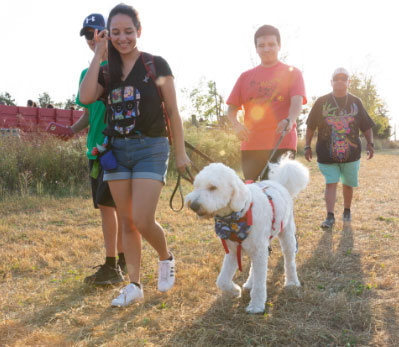Therapy Dogs:
Providing Emotional Support to Those in Need
Therapy Dogs
Hover over the dog to find out more about how therapy dogs are equipped to help their partners.
Living Healthy
Research suggests interaction with dogs can promote health and well-being by providing companionship, emotional support and comfort to their handlers. Interaction with dogs can improve blood pressure, heart rate, stress, depression, anxiety, pain, fatigue and social functioning.
Use Your Furry Friend as Motivation and Establish a Routine
Walking has a number of health benefits for your pooch - and you! Research has found dog walking can improve a dog owner’s physical activity levels, and the motivation and encouragement provided by animals may strengthen engagement in a weight loss program.
Emotional Health Benefits
There are also emotional benefits to walking a dog, including providing companionship, which has been found to decrease feelings of loneliness and isolation.
Socialize With Your Dog
Go to the park with your dog, and you may find that you’re chatting with more people than you would otherwise. Dogs are a great way of breaking the ice.



